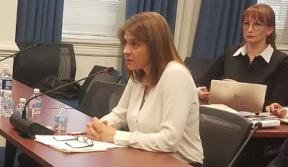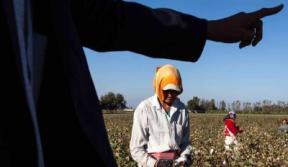Yes, I’m very guilty of indulging in those $9, single-origin chocolate bars with the pretty wrapping paper. They’re so delicious, and I can never believe how much I will pay for the price of pleasure. But the gnarly reality is that I’m helping the unending cycle of child laborers in West Africa; many of whom are pressed into service on cocoa plantations, working long hours for such low pay that advocacy organizations deem as child slavery. Chocolate consumers, we’re all going to hell.
Seventy percent of the world’s cocoa supply is grown in just two countries, Ghana and Cote D’Ivoire, yet despite global demand for their product, cocoa farmers in those countries earn wages that amount to about a third of what’s considered the poverty line. They can’t afford to hire workers to harvest the cocoa crops, so many pull their children out of school to work with them on the plantations. Even direr are the circumstances under which children from neighboring unstable countries such as Burkina Faso are trafficked across the newly permeable borders of Cote D’Ivoire, which emerged from a tumultuous decade characterized by two civil wars in 2011.
In 2009, the US Department of State estimated that more than 100,000 children worked in Cote D’Ivoire’s cocoa industry, with ten percent of them victims of human trafficking. In 2010, the Department found that over 43 percent of Ghanaian children between the ages of five and 14 worked on cocoa plantations. To get some background on this intensely controversial issue, I spoke with Abby Mills, director of campaigns at the International Labor Rights Forum in Washington, DC.
MUNCHIES:How big is the problem of child labor on West African cocoa plantations?
Abby Mills: Our organization is about to issue a report on the cocoa industry; in our research, we found that in Togo, Ghana, and Cote D’Ivoire there are about 500,000 to 1.5 million child workers, and about 98 percent of them are working on family farms. To give you a sense of the effect that has on the countries we’re talking about, about 75 percent of children in Ghana attend school, but in Cote D’Ivoire it’s much worse—fewer than 60 percent of young boys attend school, and it’s only about 50 percent for girls.
Where do you think the problem begins?
In a lot of these countries, the farmers don’t make enough money and they have to somehow figure out how to get their cocoa harvested, but they can’t afford to hire workers. And that’s where the kids come in: Kids help their parents and end up working in fields instead of attending school. Another problem, particularly in Cote D’Ivoire, is child trafficking. There’s a lot of movement of kids across the borders between Cote D’Ivoire and its neighbors like Burkina Faso, and we know that there are kids coming across those borders that end up as indentured workers on Cote D’Ivoireian cocoa farms.
What’s the work like?
It’s very dangerous—it’s definitely one of the worst forms of child labor. It often involves large machetes, which are used for cutting down large cocoa pods and occasionally involves applying pesticides and other chemicals to the trees. These child workers are out on the plantations for large periods of time. Research conducted in Ghana by Tulane University has shown that 80 percent of children working in cocoa were carrying heavy loads, while 57 percent reported using machetes or long cutlasses.
You mentioned that one of the reasons for the child labor is that farmers can’t afford to hire workers. What are the other factors that contribute to this problem?
The cocoa trading system is extremely complicated: The cocoa price is fixed by a variety of factors, none of which the farmers have any say in. They don’t have representation on the boards that set prices, and they’re at a really severe information disadvantage; they don’t even know what price they should be asking for their crop.
When did the international community begin to focus on this issue?
I’d say since chocolate became a globally traded commodity in the late 1700s. Slavery in the cocoa industry has always been an issue because cocoa is grown in a part of the world that has always largely been at the mercy of forces it can’t control. But it wasn’t until the 90s that this issue was noticed by the international community, when a bunch of stories came out in the news about cocoa. There have been a lot of ways that people have tried to answer to this—probably the most well known is the Harkin-Engel Protocol of 2001, which was a coalition of chocolate companies and the governments of Ghana, Cote D’Ivoire, and the US—kind of all working together to find ways to address this problem. Cocoa prices have risen continuously for the past several years, and one of the reasons for that is that there’s concern about what’s going to happen with supply. Chocolate companies are working on getting higher crop yields: They might want to improve the lives of the farmers, but they also want to secure their access to cocoa and make sure there’s plenty of it for them to buy.
What does your organization do to address the problem?
Our big push over the last ten years has been to try to get companies to certify their cocoa as coming from fair trade sources, ensuring a living wage for the farmers and don’t use child labor or forced labor anywhere in their supply chain. With Hershey, we had a multi-year campaign called “Raise the Bar” that put pressure on them to purchase only certified cocoa. A lot of other organizations worked with us to try to get this to happen, and Hershey has agreed to certify all its cocoa by 2020.
Are chocolate companies trying to switch to this model?
Yes, a lot of them have gone to this certification model. That’s a very good thing, because it’s gotten people thinking about where their cocoa comes from. But in our research, we found that even for fully certified cocoa, it doesn’t necessarily guarantee that the farmers are making the wages that they should be. What we’re focused on is getting the best deals to increase the livelihoods of farmers, and ensuring that their voices are heard at every level of this process.
Is there anything consumers can do to support ethically grown chocolate?
Yeah, there are. Because of the issues with certification, we tend to promote chocolate from companies that we know are working directly with farmers: Usually, these are small farmer co-ops where the chocolate companies are very engaged with the farmers and what they do. The two that we work with most closely are Equal Exchange and Divine.
Thanks, Abby.

